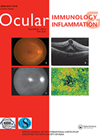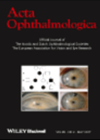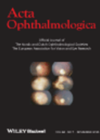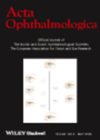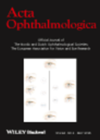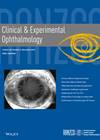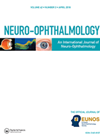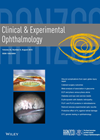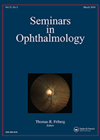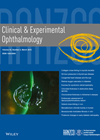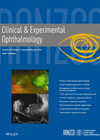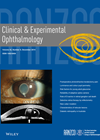
Journal Reviews
Uveitic glaucoma
The purpose of this retrospective study from two tertiary Institutions in Israel over a period of 13 years, is to present the long-term outcomes of uveitic glaucoma and to identify risk factors for progression. The study included 34 patients (53...
Importance of visual fields for detection of progression in glaucoma
Early detection of progression of glaucoma, and escalating treatment is vital to maintain vision in patients. In this paper from the Early Manifest Glaucoma Trial (EMGT) group they compared the earliest detection of progression in visual fields and monoscopic optic...
Predictors of IOP reduction after SLT
The aim of this study was to identify predictors of intraocular pressure reduction following selective laser trabeculoplasty (SLT) in patients with primary open-angle glaucoma, who are already taking maximally tolerated IOP-lowering medication and need further IOP reduction. In this prospective...
Cataract surgery and long-term risk of glaucoma in PEX
The objective of this study was to compare the development of glaucoma and IOP over an extended time period following cataract surgery in eyes with and without pseudoexfoliation syndrome (PEX), and trying to determine the impact of cataract surgery on...
Update on primary angle closure glaucoma
This review article considers primary angle-closure glaucoma which is responsible for half of glaucoma-related blindness worldwide. Angle closure is characterised by appositional contact between the iris and trabecular meshwork. It tends to develop in eyes with shallow anterior chambers, anteriorly...
Aflibercept for the treatment of neovascular glaucoma
The aim of this study was to investigate initial results regarding the treatment of neovascular glaucoma (NVG) with intravitreal aflibercept. NVG is classified into stages 0-3. In stages 1 and 2, abnormal vessel proliferation is seen with or without elevated...
Comparison of central laminar thickness in optic neuropathy and normal eyes
The study compares central laminar thickness (LT) among patients with glaucomatous optic neuropathy (GON), patients with non-GON and normal subjects. The non-GON group comprised eyes with demyelinating optic neuropathy (ON), anterior ischaemic ON, compressive ON, Leber hereditary ON and traumatic...
Phaco-ECP vs. Phaco alone to treat glaucoma
This retrospective review compared combined phacoemulsification and endoscopic cyclophotocoagulation (phaco-ECP) to phaco alone in patients with mild to moderate glaucoma. Outcome measures included cumulative full and qualified success survival, postintervention IOP and ocular anti-hypertensive medication reduction. Full success was defined...
Comparison of methods of central corneal thickness measurement in glaucoma
This prospective study was done to compare the accuracy and reproducibility of central corneal thickness measured by hand-held and disc-mounted ultrasound pachymeter in glaucoma patients. Sixty-five patients were included in the study. Patients with corneal diseases, corneal astigmatism >3 diopters...
Twenty-four hour IOP patterns in patients with thyroid eye disease (OO/GL)
Elevated IOP in patients with thyroid eye disease (TED) can be caused by restriction and compression of the globe by enlarged extraocular muscles, elevated episcleral venous pressure and increased mucopolysaccharide deposition in the trabecular meshwork. Although previous studies have investigated...
Micropulse vs. continuous wave trans scleral diode cyclophotocoagulation in refractory glaucoma
Continuous wave cyclophotocoagulation (CWCPC) delivers continuous high intensity energy to the ciliary body in an attempt to reduce aqueous secretion and hence lower IOP. It is often used as a treatment of last resort due to the potential side-effects of...
Risk factors for NTG in a young Korean population
Previously known ocular and systemic risk factors for normal tension glaucoma (NTG) include myopia, peripapillary atrophy, disc haemorrhage, migraine, obstructive sleep apnoea, thyroid disease and cerebral infarction. However, most NTG risk factor studies have examined patients aged 40 years and...

